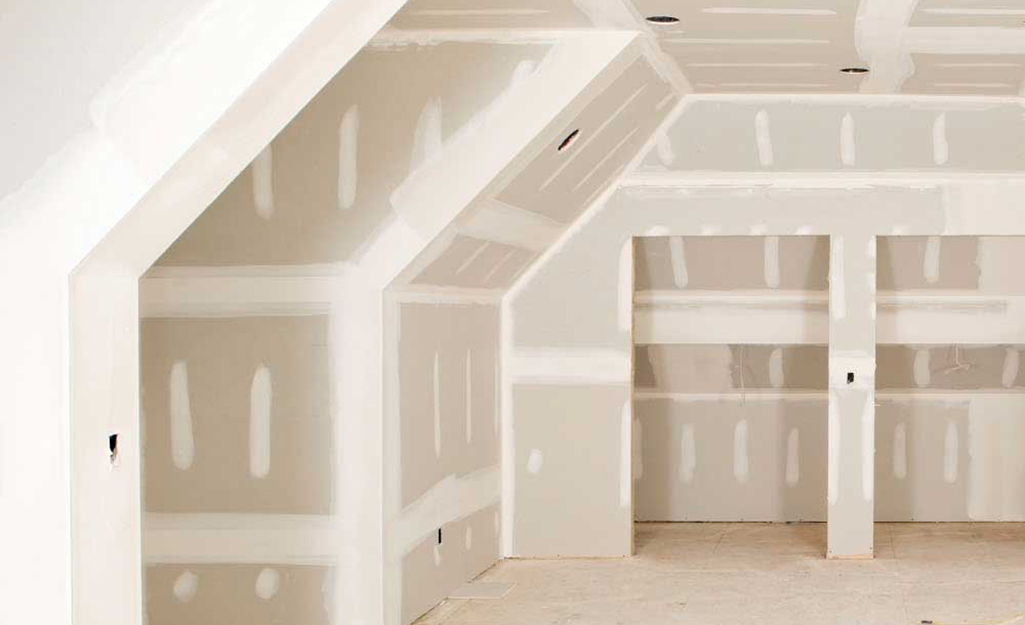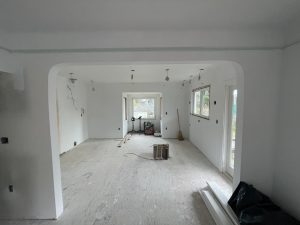1. Poor Planning: The Foundation of Success
The foundation of any successful drywall installation lies in meticulous planning. Rushing into the project without a clear strategy, accurate measurements, and a well-thought-out layout can lead to unnecessary material wastage and misaligned seams.
Encourage readers to invest time in planning by stressing the importance of taking precise measurements, creating a detailed layout, and considering factors such as doorways, windows, and corners. A well-thought-out plan not only ensures a smoother installation process but also minimizes the likelihood of costly errors.
Provide practical tips on how to measure and plan effectively, including tools that can aid in precision. Discuss the significance of understanding the space they are working with and how a detailed plan can streamline the entire installation process, saving both time and resources.
2. Incorrect Installation of Drywall Screws: The Unsung Heroes
The humble drywall screw, when improperly handled, can become a source of numerous issues. Incorrectly driven screws can lead to visible screw pops, weakened structural integrity, and an uneven surface.
Dive into the nuances of proper screw installation, including the right spacing, depth, and placement. Highlight the potential consequences of over-tightening or under-tightening screws and provide a step-by-step guide on how to drive screws correctly. Emphasize the importance of using the right tools, such as a screw gun, and the significance of evenly distributing screws across the drywall sheets.
Explain how the correct installation of screws contributes not only to the structural stability of the installation but also to the aesthetic quality of the finished product. Share real-world examples of how incorrect screw installation can manifest in problems later on, reinforcing the importance of this seemingly mundane step.
3. Neglecting Seams and Joints: Where Precision Matters Most
Seams and joints are critical areas that demand attention during the drywall installation process. Failing to properly tape and mud these areas can result in visible cracks, uneven surfaces, and a lackluster finish.
Guide readers through the meticulous process of taping and mudding, emphasizing techniques for achieving seamless joints. Discuss the importance of feathering and layering joint compound, as well as the necessity of sanding between layers. Provide insights into the types of tape and joint compounds available, ensuring readers understand the significance of selecting the right materials for the job.
Illustrate the impact that well-treated seams and joints can have on the overall appearance of the finished wall. Share before-and-after images or case studies that highlight the transformation achieved through proper treatment of these crucial areas.
4. Inadequate Cutting and Fitting: Precision in Action
The precision with which drywall sheets are cut and fitted can significantly impact the overall outcome of the project. Inaccurate measurements, jagged cuts, and improper tool usage can lead to gaps, overlaps, and uneven surfaces.
Delve into the nuances of cutting drywall, showcasing the importance of using the right tools, including T-squares and utility knives. Offer detailed tips on achieving precise cuts, taking into consideration factors such as door and window openings. Address common mistakes related to cutting curves and angles, providing step-by-step guidance to help readers navigate these challenges successfully.
Explain how properly cut and fitted drywall not only facilitates a smoother installation process but also reduces material wastage. Discuss advanced cutting techniques, such as coping for corners, and provide examples of how attention to detail during this phase can elevate the entire project.
5. Ignoring Safety Measures: Safeguarding Your Project and Yourself
In the pursuit of completing a drywall installation project, safety should always be a top priority. Neglecting safety measures can result in accidents and injuries, compromising the well-being of those involved.
Dedicate a section to the importance of safety, outlining the necessary personal protective equipment (PPE) such as safety glasses, gloves, and dust masks. Highlight safe practices when working with tools and lifting heavy drywall sheets, stressing the importance of a safe and accident-free work environment.
Incorporate real-life examples or anecdotes to drive home the significance of adhering to safety protocols. Share stories of individuals who experienced accidents due to negligence and how implementing proper safety measures could have prevented these incidents.
6. Skipping the Priming Step: The Key to a Professional Finish
While it may seem like an additional, optional step, priming the drywall before painting is a crucial component of achieving a professional finish. Skipping this step can result in uneven paint absorption, inconsistent color distribution, and a less-than-perfect final appearance.
Explore the reasons behind priming, such as promoting paint adhesion and creating a uniform surface. Guide readers through the process of selecting the right primer for their specific project, discussing the various types available and their respective applications. Provide a step-by-step primer on how to apply primer effectively, ensuring readers understand the significance of this often overlooked but essential step.
Illustrate the transformative effect that proper priming can have on the final appearance of the painted surface. Showcase side-by-side comparisons of painted surfaces with and without primer to emphasize the difference in quality.
Mastering the art of drywall installation requires more than just technical know-how; it demands a keen eye for detail, careful planning, and a commitment to best practices. By addressing and avoiding common mistakes in areas such as planning, screw installation, seam treatment, cutting and fitting, safety, and priming, individuals can elevate their drywall projects to a professional level.
Encourage readers to approach their drywall installations with patience, attention to detail, and a willingness to invest the necessary time in planning and execution. With this comprehensive guide, they can navigate potential pitfalls and achieve a flawless, professional finish that not only meets but exceeds their expectations.






